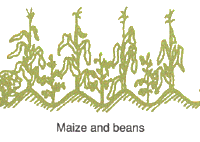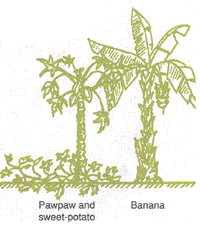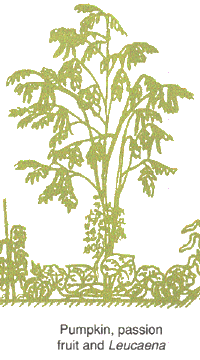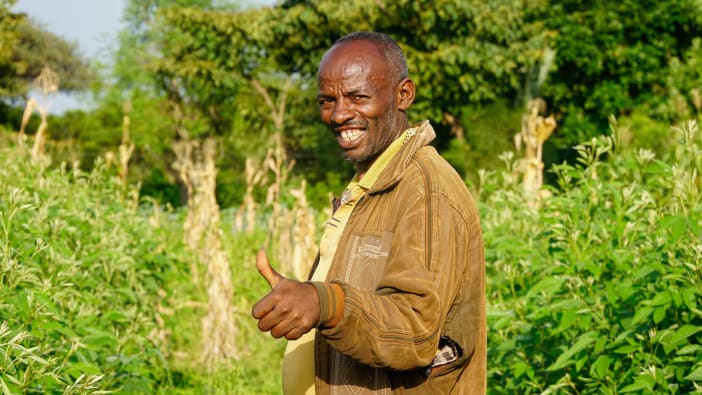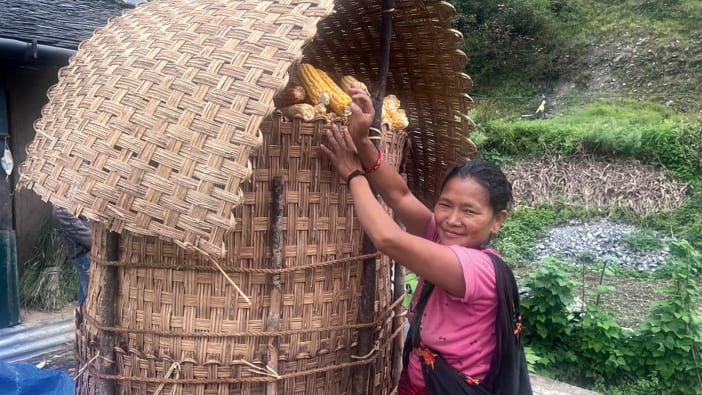by Dr Pamela M Goode.
And God said ‘Let the earth put forth vegetation, plants yielding seed, and fruit trees bearing fruit in which is their seed, each according to its kind upon the earth.’ And it was so. And God saw that it was good.'
Genesis 1:11-12
In many parts of the world there is a struggle to provide sufficient food for the family, especially staple foods. In general, food crops are grown either on a large scale under farming conditions, or on a small scale in a garden near the home. Home gardens are most common in South East Asia and West Africa and can be of great importance in improving the variety and nutritional value of the family’s diet.
Home gardens have the following features:
- They are small and sometimes fenced.
- The plots are close to the house.
- A mixture of annual and perennial crops are grown closely together.
- The land is cropped heavily.
- The land is cultivated several times a year.
- The land is always under cultivation.
- Hand tools are used to cultivate the crops.
Most home gardens have a mixture of trees (for fruit or firewood), perennial crops such as cassava and pigeon peas, many varieties of vegetables, some staple crops such as yams, maize or sorghum and ground covering plants such as beans and cowpeas. Plants are usually grown mixed together to make the best use of the small space available. So there may be a plot of maize, tomatoes and beans growing around banana and pawpaw trees. Small livestock, such as chickens, rabbits and ducks may also be part of the home garden.
If well-managed, home gardens can produce large quantities of food for the family. Care must be taken to maintain the soil fertility by adding manure, compost and growing legumes such as beans and cowpeas.
A well-managed home garden demonstrates how a good balance between people, crops and animals can be achieved. This, I believe, is the key issue in our understanding of the stewardship of God’s creation. God made the world and ‘He saw that it was good’.
Dr Pamela Goode is an agricultural botanist now working in the Environmental Resources Unit at Salford University. She spent many years in Uganda and has a particular interest in edible wild plants as a food resource.




